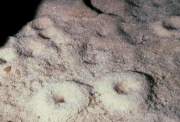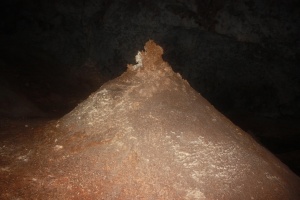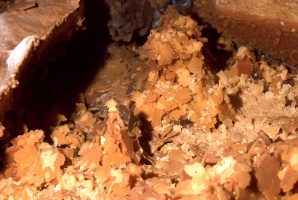Calcite (Inventory)/Raft Cone
From LagWiki
(Incorporate the new image) |
|||
| Line 6: | Line 6: | ||
Look for raft cones in pools and former pools and anywhere rafts are observed. | Look for raft cones in pools and former pools and anywhere rafts are observed. | ||
| - | <gallery caption=Gallery perrow= | + | <gallery caption=Gallery perrow=2 widths=300px heights=200px> |
File:Large raft cone.jpg|Large raft cone with secondary formations on top | File:Large raft cone.jpg|Large raft cone with secondary formations on top | ||
File:Raft Hoodoos.jpg|Loose pile of rafts | File:Raft Hoodoos.jpg|Loose pile of rafts | ||
Revision as of 22:40, 26 October 2012
The Raft Cone field of the Calcite section is used to record stations where raft cones are observed.
Raft cones are piles of rafts. Dripping water can cause rafts to sink in the same location. They can pile up in flaky mounds that look like stalagmites. They may be cemented together, especially if exposed because the pool has dropped or may still be a loose pile of rafts. There is no separate field for gypsum raft cones even though there is a separate field for gypsum rafts; so, any observation of a raft cone should be recorded here no matter its composition. Raft cones may exhibit a hole in the top like a volcano where water has dissolved or eroded into the cone. Exposed raft cones can be obscured by secondary formations.
Look for raft cones in pools and former pools and anywhere rafts are observed.
See also
References
- Palmer, Arthur N. (2007) Cave Geology CAVE BOOKS, Dayton, OH p 279 ISBN-13: 978-0-939748-66-2, ISBN-10: 0-939748-66-5
- Hill, Carol; Paolo Forti (1997) Cave Minerals of the World (Second Edition ed.) National Speleological Society pp 88-91 ISBN: 1-879961-07-5



